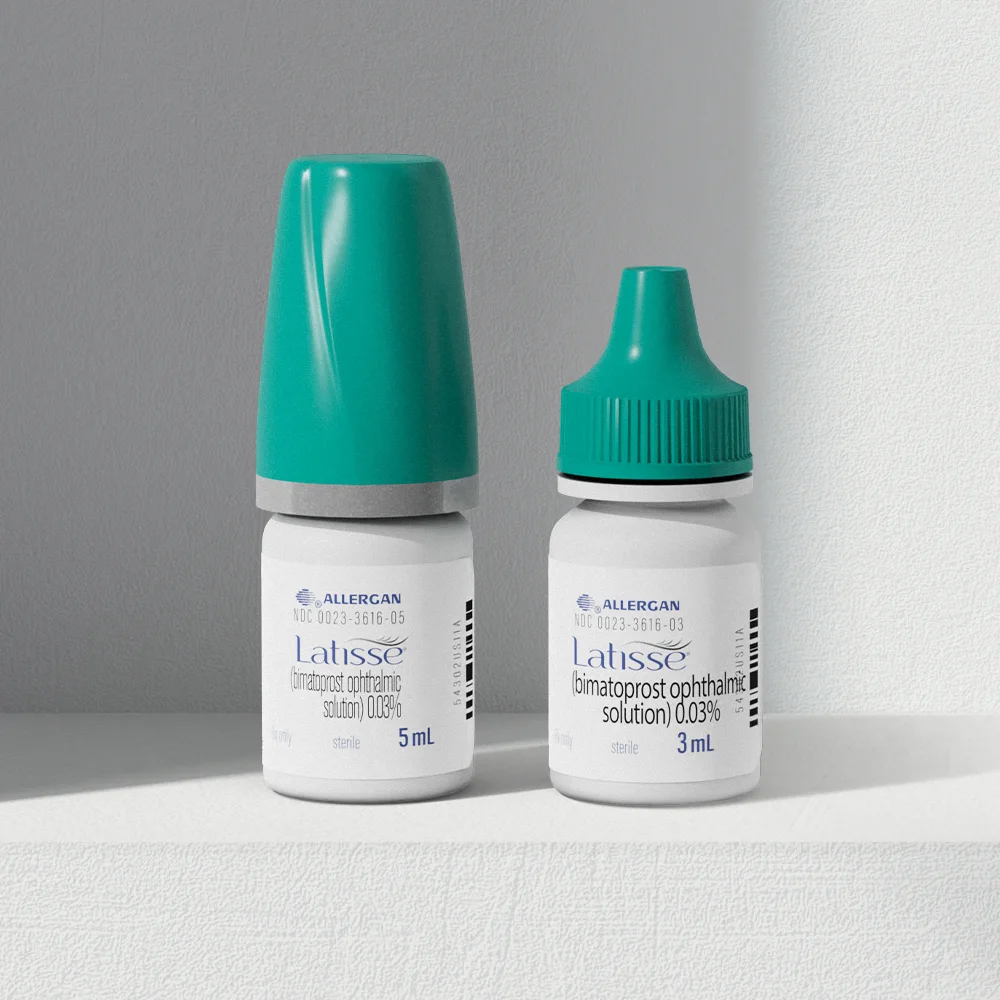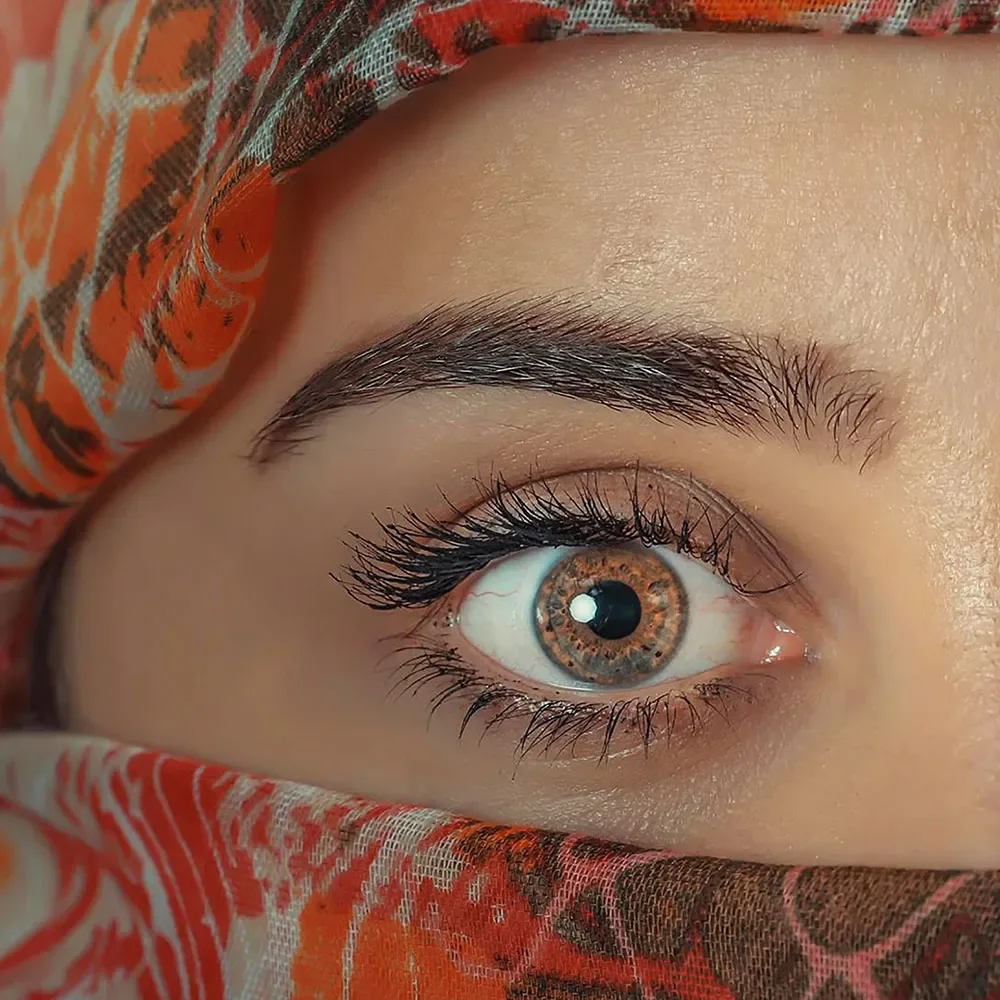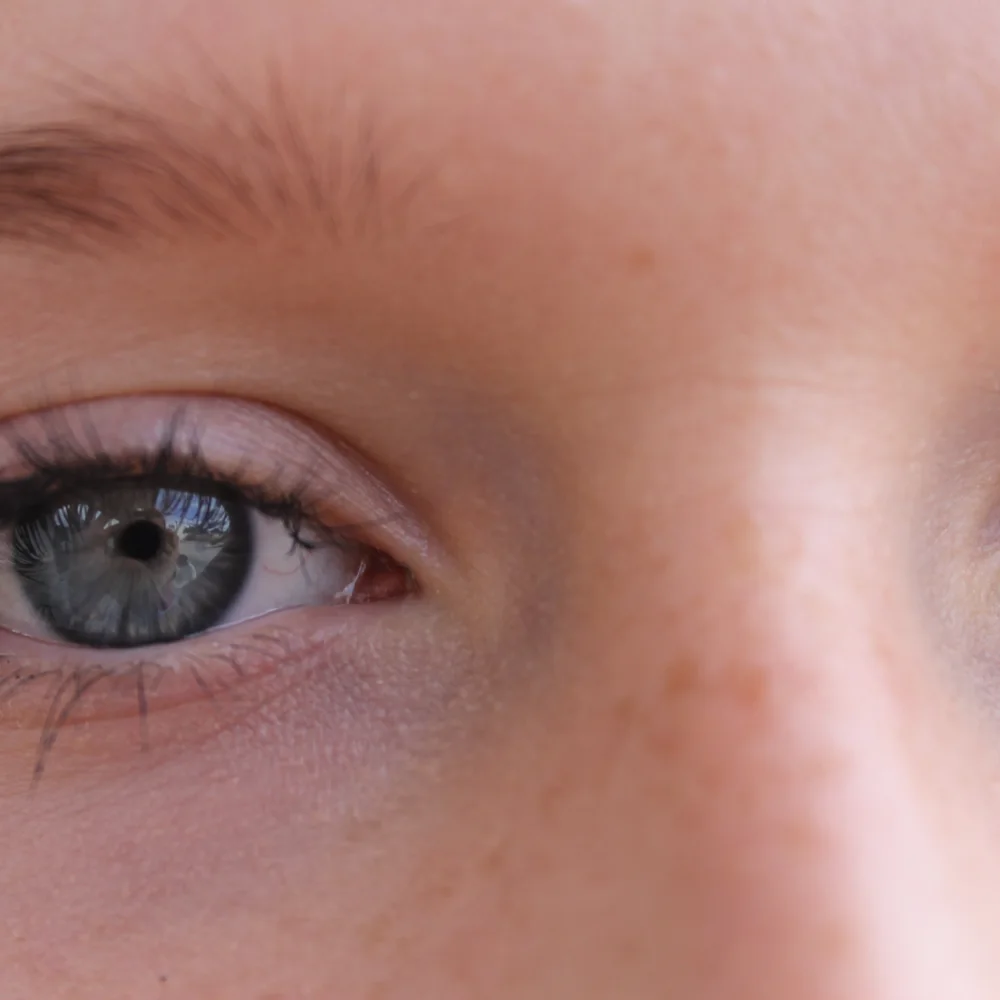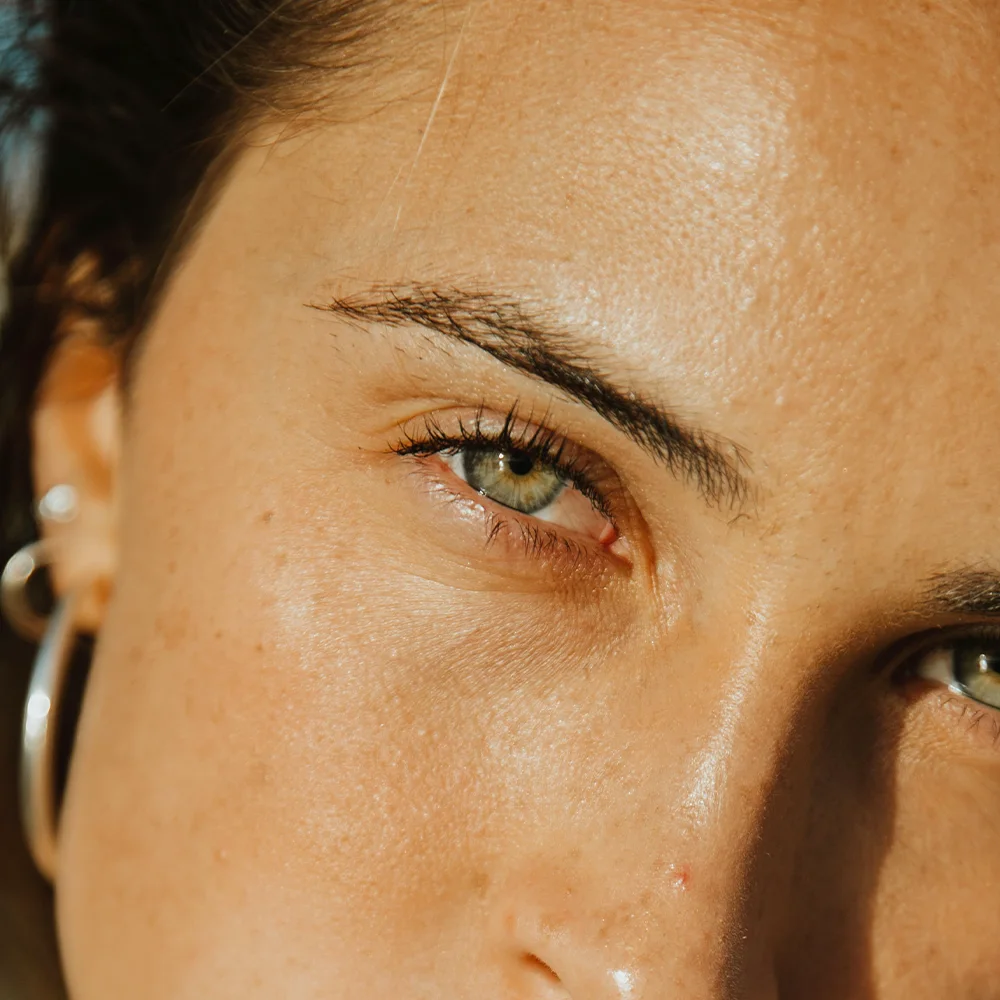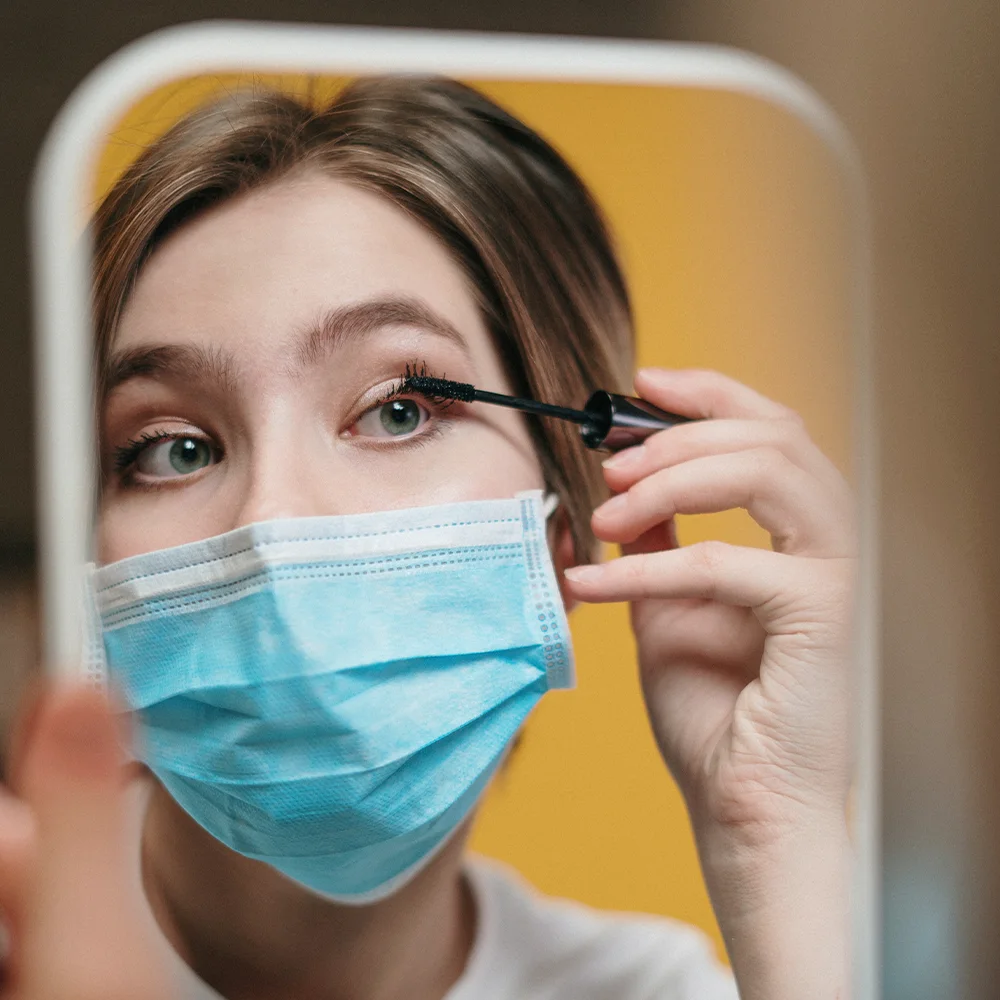Here's what we'll cover
Here's what we'll cover
When people with glaucoma, a common condition caused by increased pressure in the eyes, started using a medication called bimatoprost, they suddenly noticed they had thicker, darker lashes. Researchers realized they were onto something.
The drug went through new rounds of testing and received FDA approval for increasing eyelash growth under the brand name Latisse. It comes with a set of sterile applicators, and how long a bottle lasts depends on the stage you’re at in treatment. In general, though, the small bottle (3 mL) comes with 70 applicators and lasts about one month. The large bottle, which comes with 140 applicators, is meant to last for two months.
For the most part, Latisse isn’t covered by insurance, so prices likely won’t vary significantly, but some providers or pharmacies offer volume discounts if you buy more than one bottle at a time or sign up for a subscription.
Latisse Important Safety Information: Read more about serious warnings and safety info.
How does the price compare to other eyelash treatments?
When it comes to growing natural lashes, there aren’t yet any other treatments available that have been proven to increase eyelash growth like Latisse. There are other options, though.
False lashes and eyelash extensions are both popular. False lashes are available as disposable or multi-use sets that you apply using glue or even magnets that can make your lashes look fuller, longer, and thicker. They come as individual lashes that you glue to your own or strips you attach to the base of your lashes or eyelid. You can purchase them at the drug store or from online retailers. They range in price from pennies to hundreds of dollars per set. While the results can be dramatic (and colorful or sparkly), they’re ripe for user error and are designed to be taken off at the end of the night.
Eyelash extensions are typically done at a lash bar or salon. The initial treatment, which involves gluing individual lash extensions to your existing lashes one or two at a time, takes skills, so this option isn’t cheap. A full set will usually run you between $150–300 depending on which lashes you get and where you get them done. They fall out and require frequent fills to maintain the look. Fills, which you need every three to four weeks, cost between $50–100 making these a pricey option.
Does Latisse work?
When it comes to lash serums, the options are endless. But not all serums are created equal. While many of them promise serious results, only one (Latisse) has been approved by the FDA to lengthen and thicken natural lashes.
According to data from a clinical study, 79% of people who used Latisse saw longer, thicker lashes after applying the product for eight weeks. After 16 weeks of use, researchers found lashes grew by an average of 25% in length (FDA, n.d.). If you use this product consistently, you'll also notice a difference in eyelash length, color, and the number of hairs on each lid.
The product is meant to be applied at night just along the upper lash line on a clean, dry face. Applying it more frequently won’t make it work faster. Some people apply it nightly for the first three months and then switch to every other day to maintain lash growth. If you stop using the product, your lashes will return to their previous length over the course of several weeks or months.
How to use Latisse
Here are some steps if you’re using the product for the first time (FDA, 2020):
Latisse should be used at night. First, make sure your face is clean and makeup free. If you wear contact lenses, take them out.
Apply one drop of Latisse to one of the sterile applicators included in the package.
Apply the solution evenly to the upper eyelid at the base of the eyelashes. Do not apply to the lower eyelid. The upper eyelid should feel damp, but the product shouldn’t drip. Dab any extra product with a tissue.
Repeat on the other eyelid with a new sterile applicator.
Latisse safety and side effects
Less than 4% of people who use Latisse report experiencing side effects. Here are some of the most common ones:
Itchy or irritated eyes
Eye redness
Dry eye
Darkening of the skin around the eye (hyperpigmentation)
Swelling around the eye
Other possible reactions include darkening of the iris (which may be permanent), excess hair growth beyond the lashes, a buildup of eye fluid, or an eye infection from reusing an applicator.
Don’t use Latisse if you’re allergic to any of its ingredients. Be sure to remove contact lenses before using Latisse or they could become discolored.
Contact a healthcare provider for medical advice if you have a reaction, notice any changes in your eyes, or experience sudden vision problems (FDA, 2020).
DISCLAIMER
If you have any medical questions or concerns, please talk to your healthcare provider. The articles on Health Guide are underpinned by peer-reviewed research and information drawn from medical societies and governmental agencies. However, they are not a substitute for professional medical advice, diagnosis, or treatment.
Drugs.com-a. (n.d.). Latisse Prices, Coupons and Patient Assistance Programs. Retrieved Aug. 3, 2021 from https://www.drugs.com/price-guide/latisse
Drugs.com-b. (2021, June). Bimatoprost. Retrieved Aug. 3, 2021 from https://www.drugs.com/monograph/bimatoprost.html
GoodRx. (n.d.). Latisse Bimatoprost (Latisse) . Retrieved Aug. 3, 2021 from https://www.goodrx.com/latisse
U.S. Food and Drug Administration (FDA). (2020, September). Label for NDA 022369 . Retrieved Aug. 3, 2021 from https://www.accessdata.fda.gov/drugsatfda_docs/label/2020/022369s012lbl.pdf
